World famous ancient Siberian Venus figurines 'are NOT Venuses after all'
By Olga Gertcyk
None are naked: instead, they're far more interesting…
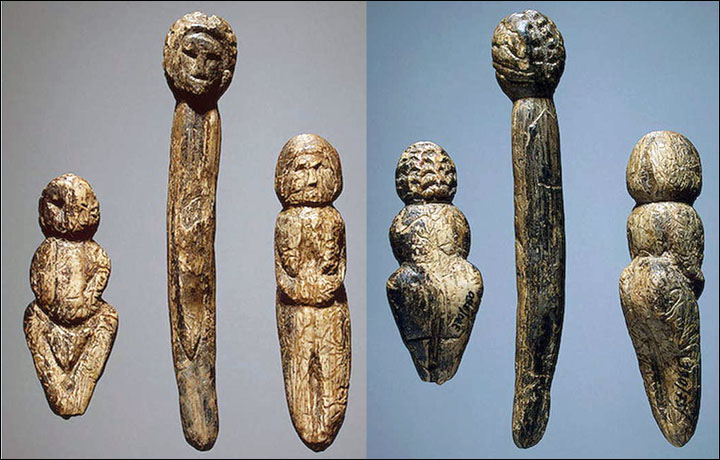
Close microscopic inspection reveals them as being far from idealised female forms. Picture: Hermitage Museum
New groundbreaking research shows that a celebrated collection of prehistoric Venus figurines are - in fact - a fashion show of ordinary people of all ages from some 20,000 years ago.
Close microscopic inspection reveals them as being far from idealised female forms. Rather, many are male, and others are children, the new research shows.
It's true that in the past some of the woolly mammoth tusk carvings were known to be clothed. Notably, these were called alluringly Venus in Furs figurines. They were dressed for protection from the Siberian winter, and are possibly the oldest known images anywhere in the world of sewn fur clothing. Yet even deep in Soviet times, the figurines were hailed for their feminine features, and seen as the idealised female form.
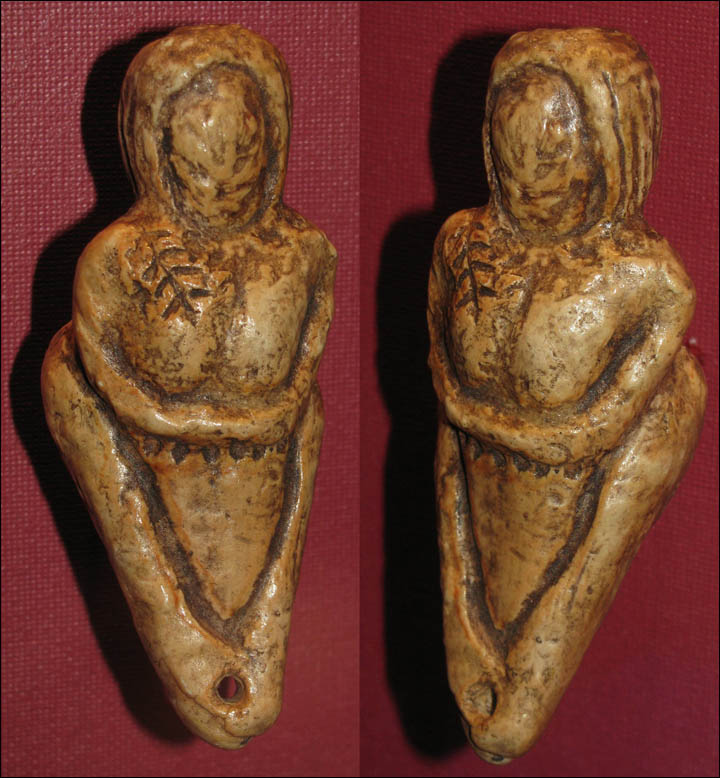
We saw the different types of hats, hairstyles, shoes and accessories, which were depicted with thin lines. Picture: Hermitage Museum
Here, for example, are the words of eminent Siberian archeologist and historian Academician Alexey Okladnikov in 1957, on his first 'meeting' with one of the stunning examples of Palaeolithic art from the Buret excavations in this collection.
Carved of mammoth tusk, these female forms - as he supposed - rested in the 'moist and warm soil' soaked by a recent night thunderstorm. Seemingly enchanted and using language veering from the strictly scientific into the lyrical, he hailed this figurine as 'not a dead piece of an alien and long-vanished world, but something thrilling, soulful and full of life'.
Entranced by the ancient vision, he lauded her 'narrow, Mongolian slanted eyes, similar to those of a cat, looking at us, the people of the twentieth century, mysteriously and even somewhat ironically'.
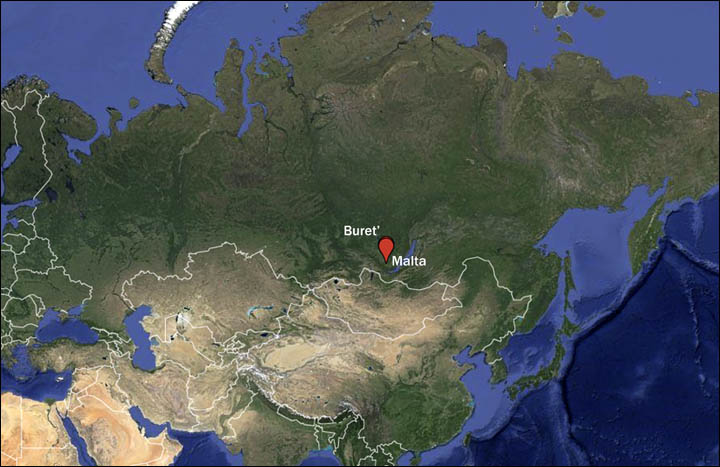
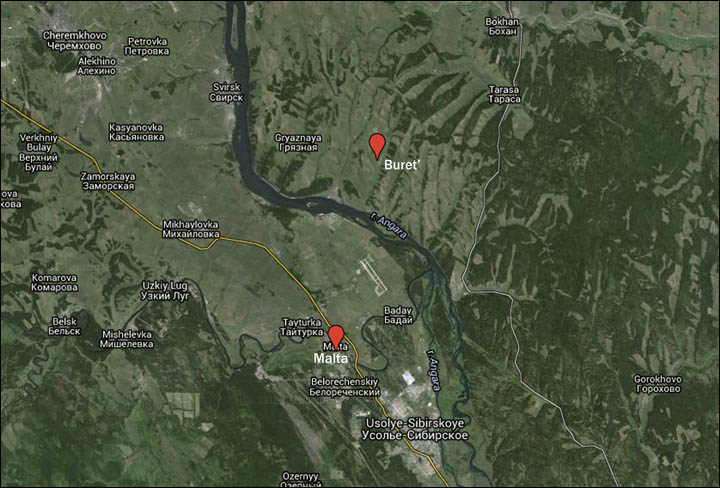
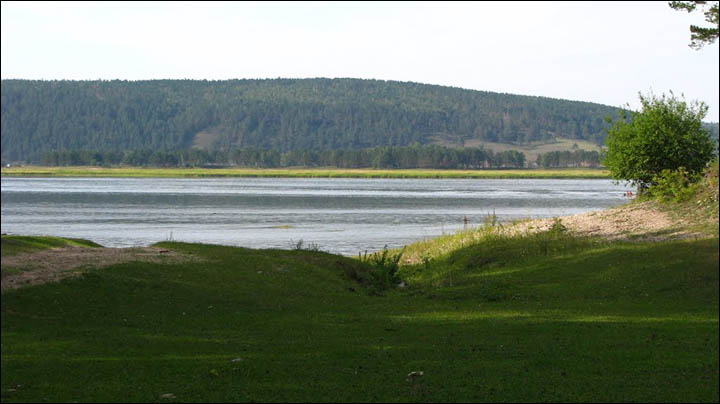
Famous Mal'ta and Buret are located in about 25 kilometres from each other, close to Lake Baikal. Pictures: Google Maps, Jokersy/Panoramio
In rich poetic vein, he continued: 'Her face, carved so unexpectedly gentle and tender, had a barely noticeable smile. The feeling of vitality and mystery coming from this fragment of mammoth tusk was getting even deeper because the statuette radiated the warmth of a living creature.
'It wasn't yellow or brown, like dozens of ancient sculptures from mammoth tusks that lie behind the museum glass window. It was pink and almost warm, like a live human body. This is exactly how a piece of a fossil ivory looks, soaked with the millennial Earth's juices.' But now deeper study using modern technology has been conducted by Dr Lyudmila Lbova and trace analysis specialist Dr Pavel Volkov.
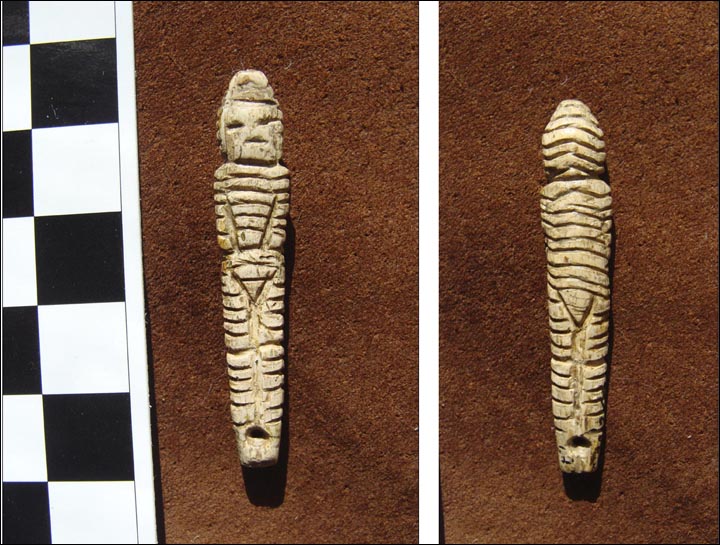
'In the collection of Malta figurines, the overalls are more typical for small sculptures (those of 2-4 cm in height), depicting children.' Picture: Lyudmila Lbova
And a striking new light has been cast on the Mal'ta and Buret figurines - found from the 1920s to the 1950s by the Angara River close to Lake Baikal in modern-day Irkutsk region. Notably, the research disputes the widely-held believe that some of the figures are nude.
'There were many attempts to understand the idea of these figurines, and their symbolism,' she said. 'And there were many interpretations. We decided to pay more attention to some material things, to study the surface, to understand how these figurines were made.
'Modern equipment allows a lot of opportunities to undertake such a study. Totally there are 39 or 40 known figurines found both on Mal'ta and Buret: we have (so far) studied 29 of them, using microscopes and macro shooting.'
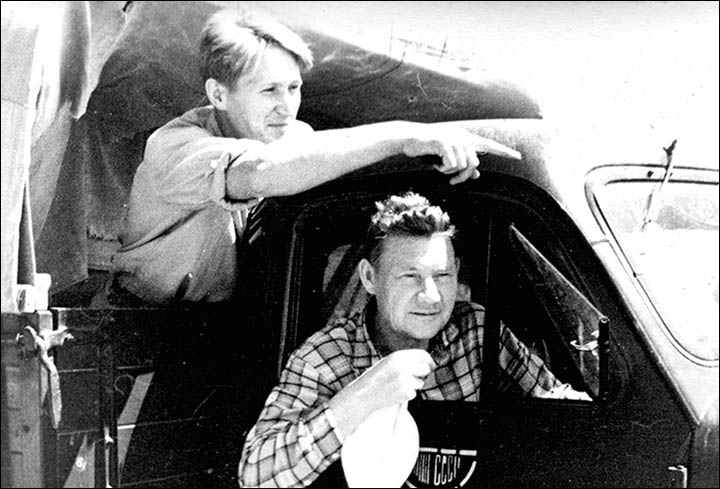
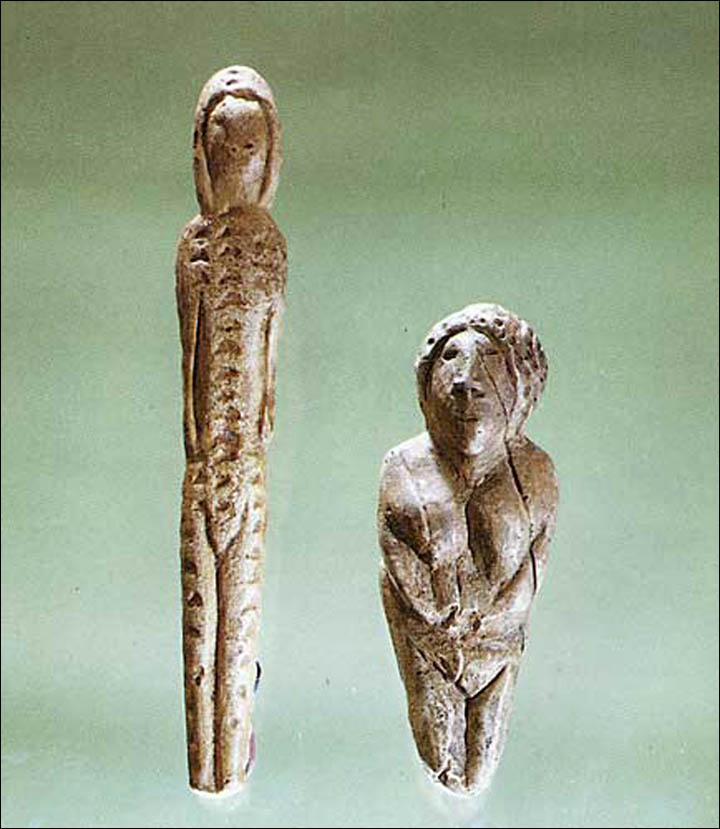
Academician Alexey Okladnikov (right) with Academician Anatoly Derevyanko (left) in archaeological expedition. Figurines from Mal'ta and Buret. Pictures: Science First Hand, Hermitage Museum
She explained: 'We worked with sculptures from the collections of the State Hermitage Museum (St Petersburg). First, we found out how these figurines were made and checked our conclusions with experiments. Some of the figurines are just work pieces, to the finished works.'
In other words, they are prototypes and 'this allowed us to reconstruct all the steps in their creation.
'Yet the most unexpected result was that we saw traces on the surface of the figurines that were not spotted earlier, as they are not visible to the naked eye, due to the ravages of time. These traces showed more details of clothes than we had seen previously: bracelets, hats, shoes, bags and even back packs.'

Dr Lyudmila Lbova: 'We decided to pay more attention to some material things, to study the surface, to understand how these figurines were made.' Picture: Vera Salnitskaya
Unfolding before their eyes were images of people as they were 20,000 years ago.
'This approach allowed us to reveal many interesting new details and review some ideas about these sculptures,' she said. 'Previously, there had been different approaches to the classification of these figurines, but the basic was a division into 'dressed' and 'naked'.
'Our research showed that all of them are more or less 'dressed'. We saw the different types of hats, hairstyles, shoes and accessories, which were depicted with thin lines. The ancient masters used different techniques to highlight the different materials - fur, leather, and decorations.
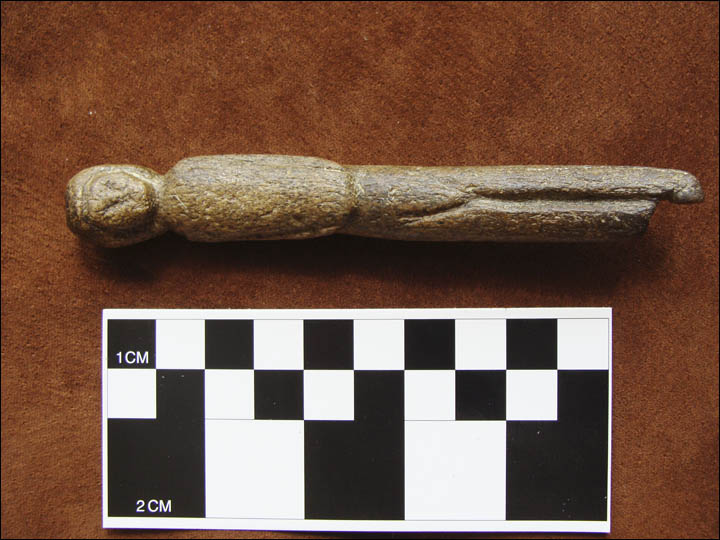
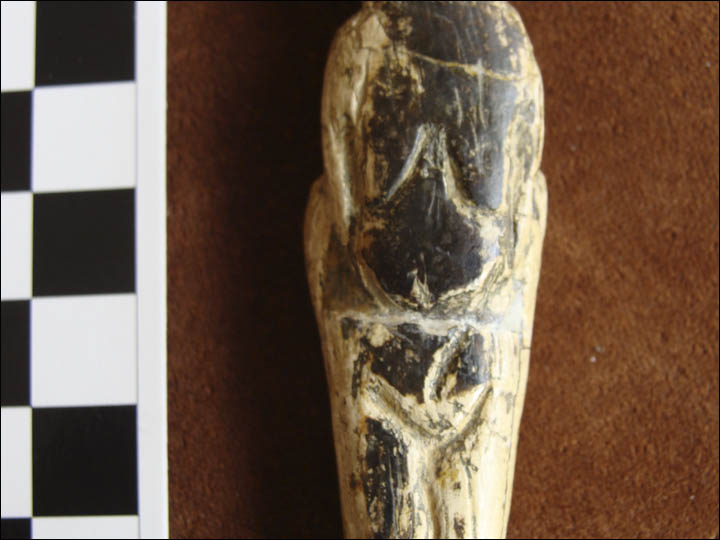
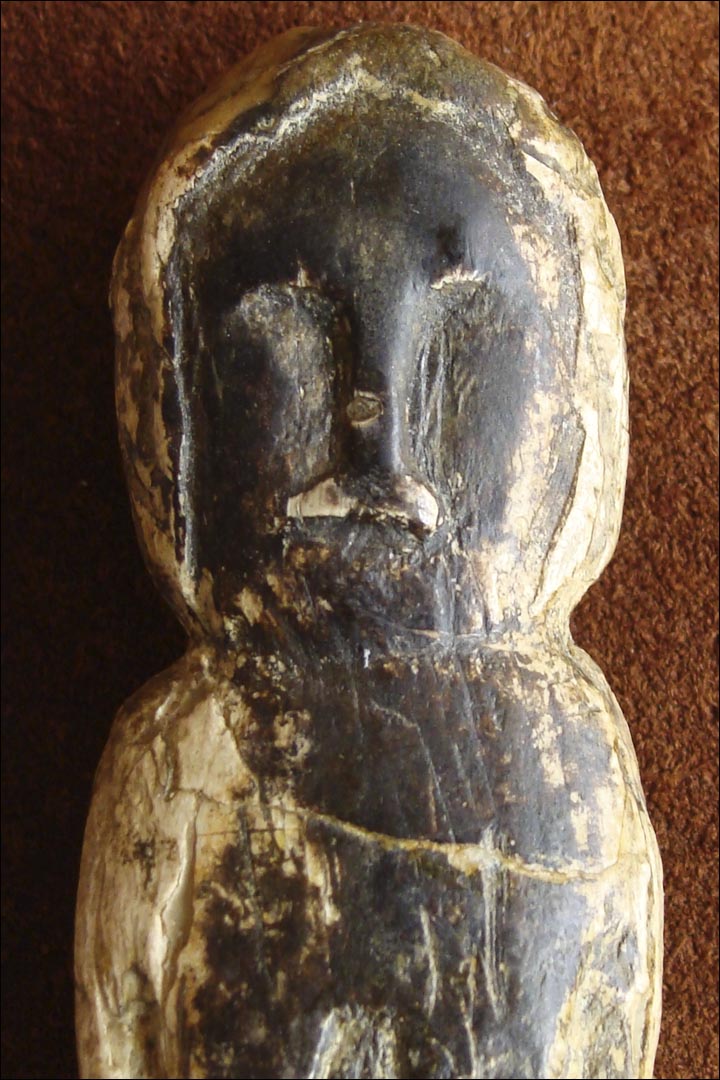
Not naked: thin lines are to show the clothing edges. Pictures: Lyudmila Lbova
'In the realistic elements of clothing and hats are obviously seen the details of traditional outerwear of Nordic peoples. The most 'popular' outerwear on the figurines are fur overalls' - similar to 'kerkery as worn by Koryak children and women in the extreme east of Siberia.
'In the collection of Malta figurines, the overalls are more typical for small sculptures (those of 2-4 cm in height), depicting children. Besides, all the figures dressed in overalls have a disproportionately large head.
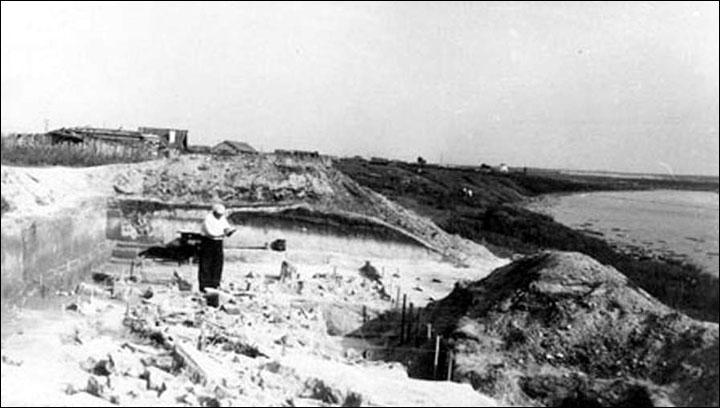
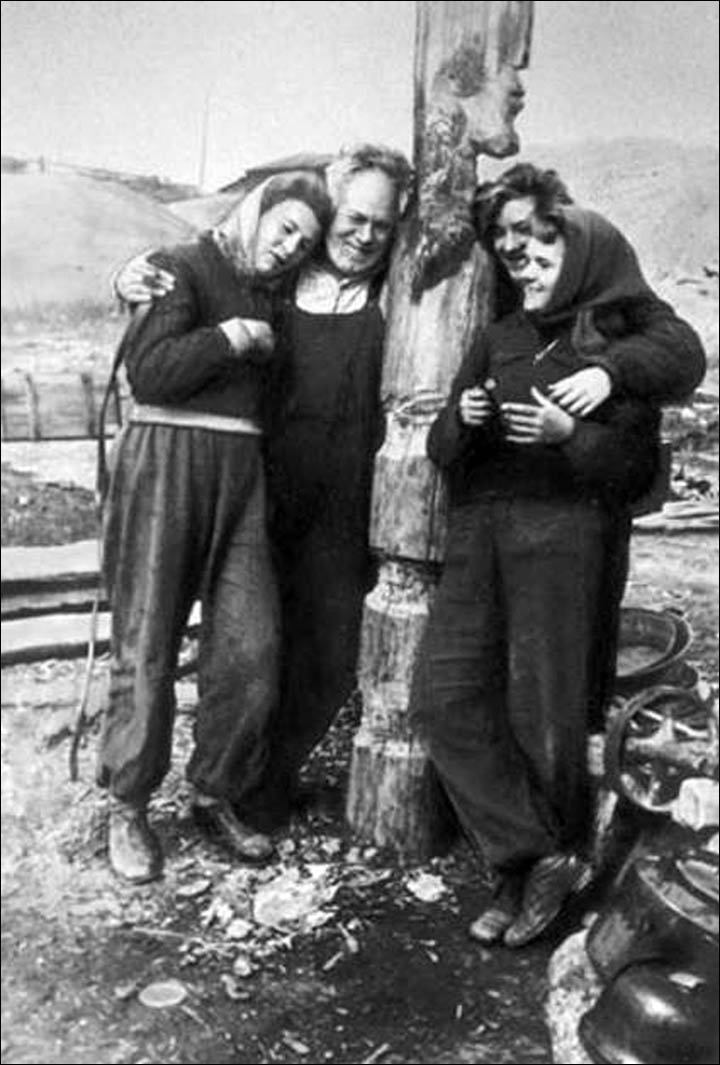
Mikhail Gerasimov [the archaeologist who found the first figurines] on the excavations at Mal'ta in 1958. Pictures: Kunstkamera Museum
'Such proportions we see in children under 5 years old, dressed in overalls with high hoods. In other words, these sculptures show small childfren in clothes typical for them and in the right proportions. I think that Mikhail Gerasimov [the archaeologist who found the first figurines] was right describing these figurines as a 'kindergarten'.
'On other sculptures, we can see overalls made of guts, probably from fish or seals, which women wore in summer along with short parkas. We see similar ones in the culture of the indigenous people who live in the Russian north-east, like the Koryaks and Itilmens.'
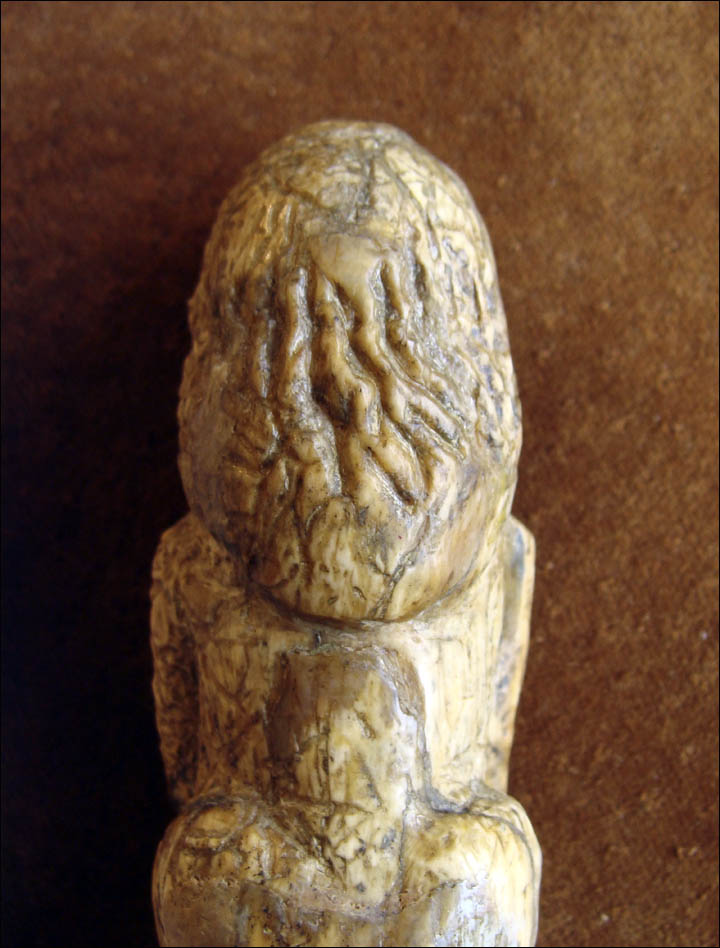
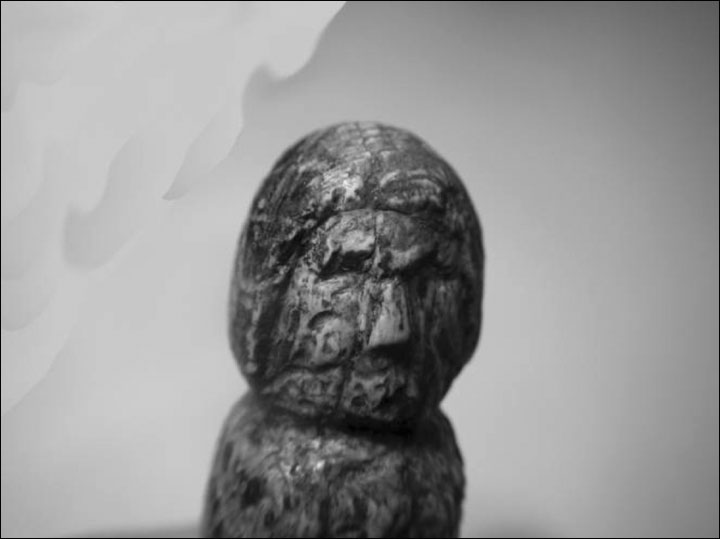

The most common are these fur 'helmets' that cover the head, neck, ears, cheeks and chin. Pictures: Lyudmila Lbova
The detail spotted on these figurines is intriguing.
'Most interesting are the hats and hairstyles. There are fur 'helmets'' - [meaning a hat that covers the head and shoulders] - 'hats and hoods. The most common are these fur 'helmets' that cover the head, neck, ears, cheeks and chin. In one case there was a high roll under the chin like a fur scarf, or a closed collar of fur.
'Another type is the helmet, which gently falls on the back and shoulders' - as might a modern firefighter's hat.' In all cases the depictions are clear between the headdresses and the hairstyles.
On the figurines 'we can also see the bags and in one case a traditional back pack with two straps. 'The figurine is probably showing a teenager. It has not so much detail, and it is not clear if this is male or female, yet the proportions of bodies show that this is definitely a teenager.
'When I just saw this back pack I was so excited - to discover these realistic details from so long ago.'
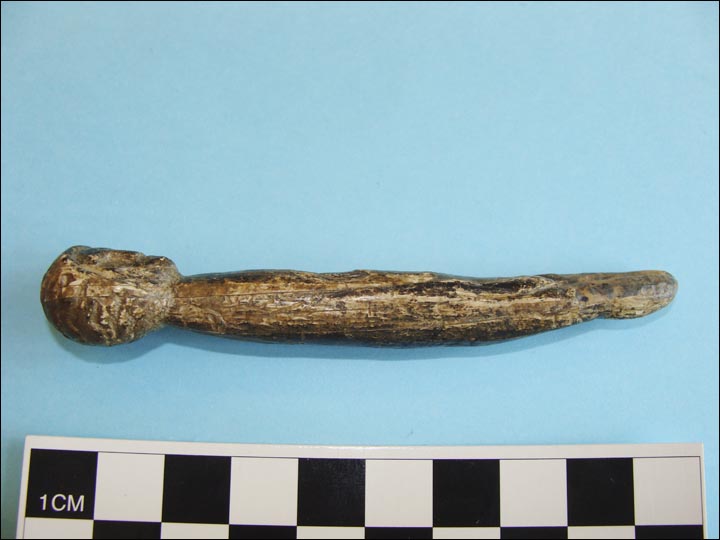
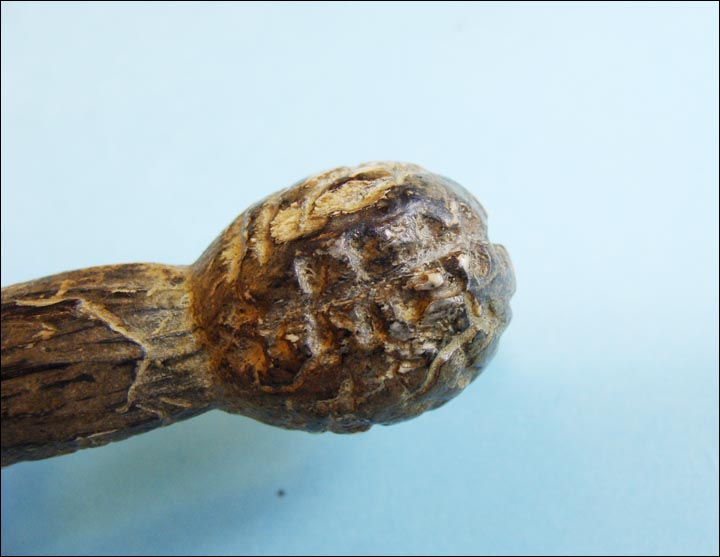
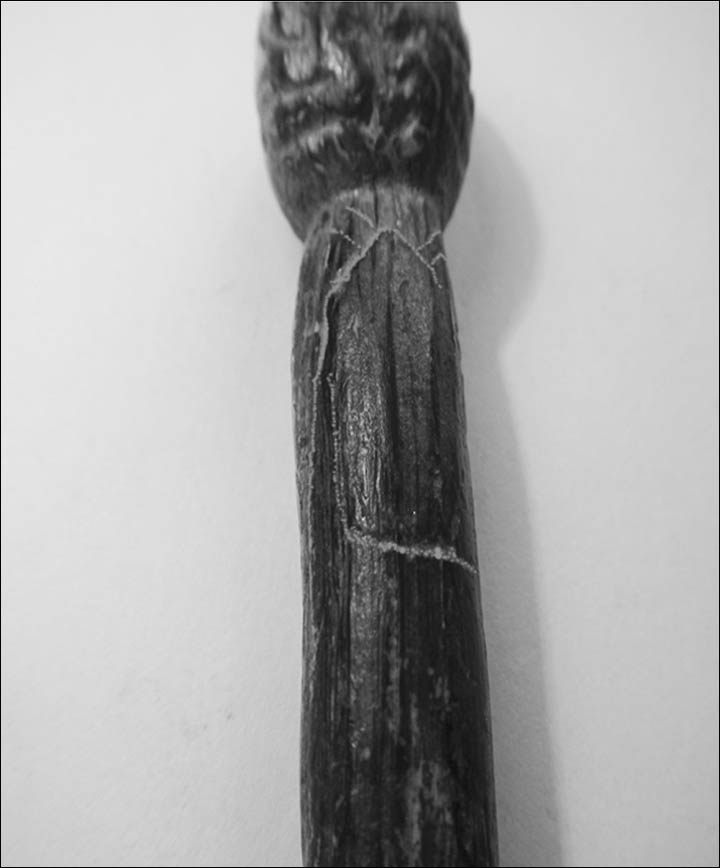
'We can also see the bags and in one case a traditional back pack with two straps. The figurine is probably showing a teenager.' Pictures: Lyudmila Lbova
Her analysis also shows that small holes on the figurine - earlier seen as indicating they were worn as pendants - likely have another purpose. 'I can only suggest that they could be firmly attached to clothing, so they did not move. The other idea is that they could be attached to a cradle with leather laces, in keeping with a known tradition among Siberian indigenous groups.
'All the figurines were found within the living facilities of ancient settlements, some of them even in ritual places in the home: they were covered with mammoth scapula bone or sprinkled with ocher.'
So why did the ancient people make these figurines? 'There is no clear answer as to the purpose,' she said. 'There can be a lot of allegations, but no one gives irrefragable answer.
'What we can say for sure is that these realistic details of clothes, accessories, hairstyle clearly show that ancient masters made the figurines of some real people, maybe their relatives. I strongly doubt that these were the images of abstract goddesses or spirits' in the sense often used to understand so-called Venus depictions.
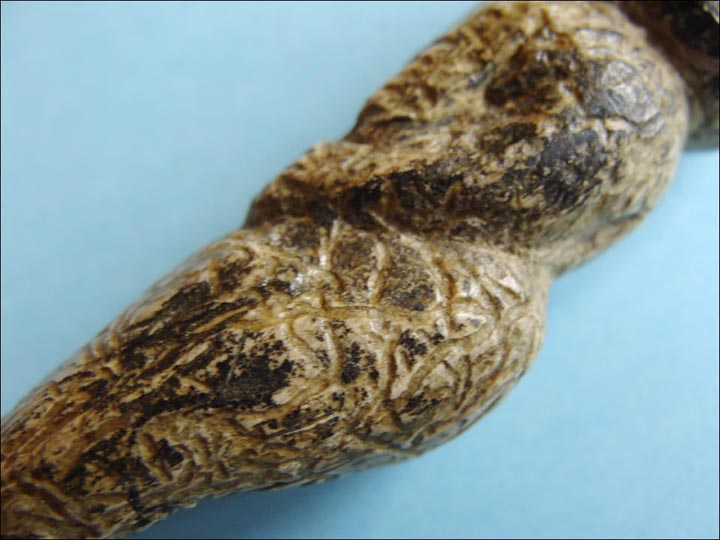
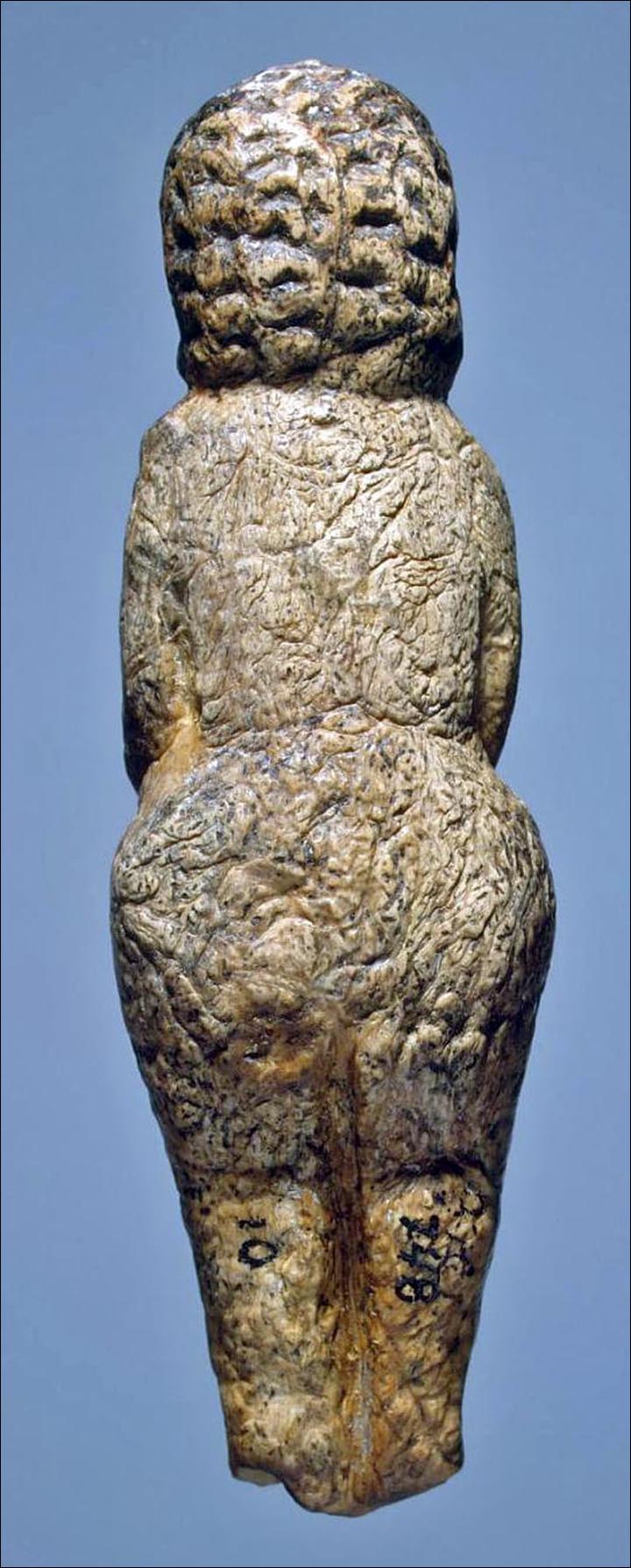
Sophisticated lines are to show the the different materials of which the clothes made. Picture: Lyudmila Lbova, Hermitage Museum
'Besides not all of the figurines show women: there are also children, teenagers both male and female. Of course, after getting some answers, we now have a lot of new questions.
'For now we can only fantasise why ancient people made these figurines, how exactly they uses them. Still, we do know now that the figurines hide a lot of tiny details which has already changed our view on their theme and their function.'
Dr Lyudmila Lbova is a researcher and Dr Pavel Volkov is a leading researcher both at the Institute of Archaeology and Ethnography, part of the Siberian Branch of the Russian Academy of Sciences.
The research was conducted by the Laboratory 'Interdisciplinary Study of Primitive Art of Eurasia', which is a joint project of Novosibirsk State University's Institute of Archaeology and Ethnography and University of Bordeaux. The Laboratory is based in Novosibirsk State University.
No comments:
Post a Comment